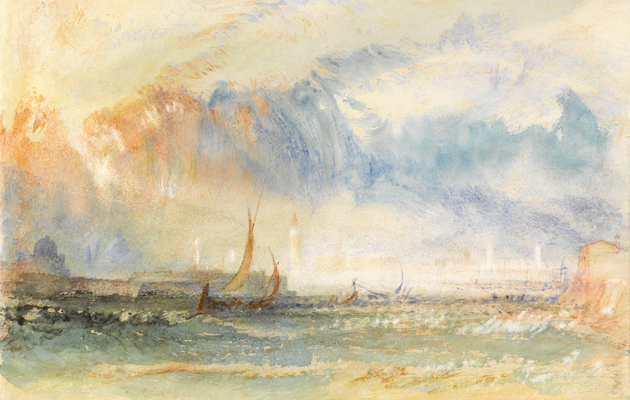Watercolour: Elements of Nature at the Fitzwilliam Museum, Cambridge
Exquisite works from one of the world’s finest collection of watercolours.


An enthralling new exhibition at the Fitzwilliam Museum, Cambridge, ‘Watercolour: Elements of Nature’, lauds the art of watercolour, a medium so often neglected and marginalized in favour of the grander gestures of oil painting. This exhibition unearths a treasure trove of watercolours from the Fitzwilliam’s collection, a rare chance to see works normally hidden away to avoid damage from light exposure.
The show celebrates the versatility of the watercolour. It is a medium that facilitates the capturing of ephemeral effects of nature in plein air studies, the portrayal of minute features of loved ones in portrait miniatures and the scientifically accurate rendering of plants in botanical drawings. Furthermore, whether breaking pictorial boundaries, as with the leaves and petals of Pierre-Joseph Redouté’s Magnolia macrophylla, which burst through the ornamental border, or flouting painterly conventions, such as J. M. W. Turner’s use of the thumbnail to scratch away paint in Venice, Storm at Sunset, watercolour can be full of virtuoso inventiveness. Yet a certain intimacy and delicacy unites these works; each piece demands close-up viewing in order to appreciate intricate and painstakingly -rendered details, from the lace collar of Nicholas Hilliard’s portrait of Henry Percy, 9th Earl of Northumberland, to the rippling patterns reflected in the underside of Sargent’s Spanish fountain.
The exhibition groups together diverse watercolours in a single room. Although laid out in a roughly chronological manner, the display does not set down a prescribed route for the viewer nor a strict historical narrative. Refreshingly, interesting themes often take precedence over date, allowing the viewer to draw unique parallels between, for example, William Blake’s illustrated poems and portrait miniatures by Hilliard and Isaac Oliver. Another effective counterpoint is the watery triptych of seascapes by Turner, James Abbott McNeil Whistler and Philip Wilson Steer. Seeing these works together allows us to appreciate how these artists of different periods paid similar attention to the play of weather and atmosphere across hazy landscapes at the cost of defined detail.
Complementing the watercolours are display cases teeming with mid-nineteenth century Windsor and Newton secret recipe books and collapsible tubes, as well as manuals and theories on watercolour painting. They highlight the increased portability, accessibility, and understanding of the medium from the mid-eighteenth century, ‘the Golden Age’ of watercolour painting. Also on show is a small exhibition of 25 Turner watercolours that were collected by his greatest champion, John Ruskin, who gave them to the museum in 1861.
The Fitzwilliam has one of the finest collections of watercolours in the world, yet they are so vulnerable to damage they can rarely be shown. This exhibition is a wonderful opportunity to see some of these ravishing works and should not be missed.
‘Watercolour, Elements of Nature’ is at the Fitzwilliam Museum, Cambridge, until 27 September 2015 (01223 332900; www.fitzmuseum.cam.ac.uk)
Sign up for the Country Life Newsletter
Exquisite houses, the beauty of Nature, and how to get the most from your life, straight to your inbox.
Country Life is unlike any other magazine: the only glossy weekly on the newsstand and the only magazine that has been guest-edited by HRH The King not once, but twice. It is a celebration of modern rural life and all its diverse joys and pleasures — that was first published in Queen Victoria's Diamond Jubilee year. Our eclectic mixture of witty and informative content — from the most up-to-date property news and commentary and a coveted glimpse inside some of the UK's best houses and gardens, to gardening, the arts and interior design, written by experts in their field — still cannot be found in print or online, anywhere else.
-
 Six rural properties with space, charm and endless views, as seen in Country Life
Six rural properties with space, charm and endless views, as seen in Country LifeWe take a look at some of the best houses to come to the market via Country Life in the past week.
By Toby Keel
-
 Exploring the countryside is essential for our wellbeing, but Right to Roam is going backwards
Exploring the countryside is essential for our wellbeing, but Right to Roam is going backwardsCampaigners in England often point to Scotland as an example of how brilliantly Right to Roam works, but it's not all it's cracked up to be, says Patrick Galbraith.
By Patrick Galbraith